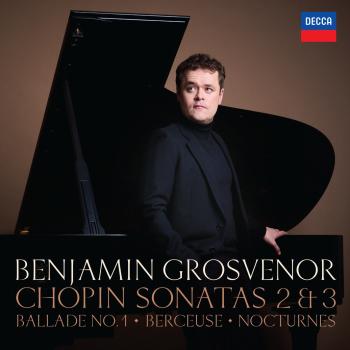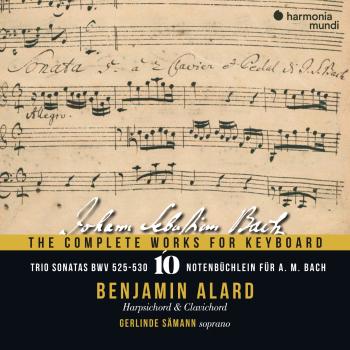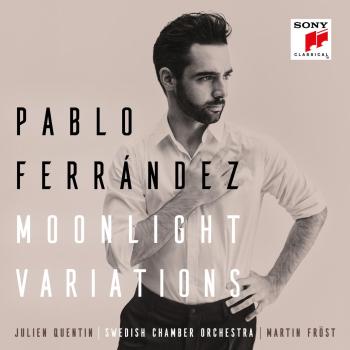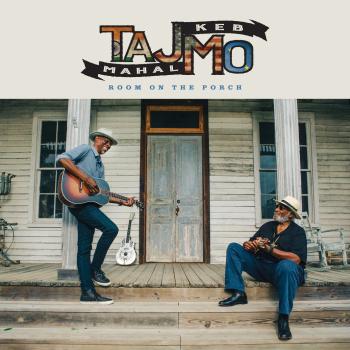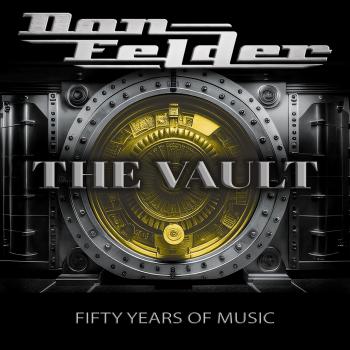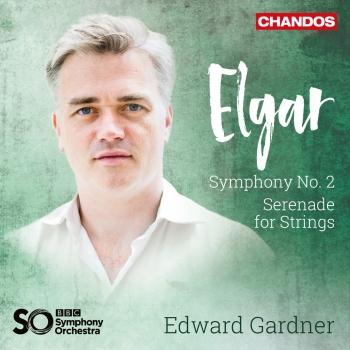
Witold Lutoslawski: Orchestral Works BBC Symphony Orchestra & Edward Gardner
Album Info
Album Veröffentlichung:
2010
HRA-Veröffentlichung:
01.01.2010
Label: Chandos
Genre: Classical
Subgenre: Orchestral
Interpret: BBC Symphony Orchestra & Edward Gardner
Komponist: Witold Lutoslawski (1913-1994)
Das Album enthält Albumcover
Entschuldigen Sie bitte!
Sehr geehrter HIGHRESAUDIO Besucher,
leider kann das Album zurzeit aufgrund von Länder- und Lizenzbeschränkungen nicht gekauft werden oder uns liegt der offizielle Veröffentlichungstermin für Ihr Land noch nicht vor. Wir aktualisieren unsere Veröffentlichungstermine ein- bis zweimal die Woche. Bitte schauen Sie ab und zu mal wieder rein.
Wir empfehlen Ihnen das Album auf Ihre Merkliste zu setzen.
Wir bedanken uns für Ihr Verständnis und Ihre Geduld.
Ihr, HIGHRESAUDIO
- 1 Vivo - Lento - Vivo - Lento - Vivo - Stesso movimento - Lento - 03:42
- 2 Vivo - Stesso movimento - Lento - 02:39
- 3 Vivo - Stesso movimento - Adagio - Piu mosso - Lento - 04:37
- 4 Vivio - Poco meno mosso - Meno mosso - 04:48
- 5 Tempo I - 05:03
- 6 Meno mosso - Tempo I - Meno mosso - Tempo I - Meno mosso - Ancora meno mosso - Piu largo - Tempo I - Lento - Vivo - Lento - Vivo - 03:00
- 7 A tempo - Poco meno mosso - Presto - Stesso movimento - Poco lento - Allegro 06:59
- 8 Chain III 10:53
- 9 I. Intrada: Allegro maestoso 06:34
- 10 II. Capriccio notturno e arioso: Vivace 05:41
- 11 III. Passacaglia, toccata e corale: Andante con moto - 05:47
- 12 III. Passacaglia, toccata e corale: Allegro giusto (alla breve) - Poco sostenuto - Quasi stesso movimento - Molto allegro (quasi alla breve) - Presto 09:38
Info zu Witold Lutoslawski: Orchestral Works
Edward Gardner, the music director of English National Opera and an exclusive Chandos artist, has completed the first album in a projected Chandos series devoted to Polish music. Also his first purely orchestral album for Chandos, the disc presents music by one of Poland’s most important twentieth-century composers, Witold Lutos³awski, including perhaps his most famous work, the Concerto for Orchestra (1950 – 54), a brilliant and highly attractive work.
Also included is the Third Symphony (1981 – 83) which was given its world premiere by the Chicago Symphony Orchestra, conducted by Sir Georg Solti, on 29 September 1983. Many passages employ the by then well-developed technique which the composer called ‘limited aleatorism’, according to which each individual orchestral musician is asked to play a phrase or repeated fragment in his own time – rhythmically independent of the other musicians. During these passages very little synchronisation is specified: events that are coordinated include the simultaneous entrances of groups of instruments, the abrupt end of some episodes, and some transitions to new sections. By this method the composer retains control of the work’s architecture and of the realisation of the performance, while simultaneously facilitating complex and unpredictable polyphony.
In later years Lutos³awski developed musical forms that combine unrelated strands of music, whose short, discrete sections overlap one another like the links of a chain. Elements of this method can be found in many of his earlier works, but the first to emphasise it was Chain 1 of 1983 for fourteen instruments, written for the London Sinfonietta. Chain 2, subtitled ‘Dialogue for Violin and Orchestra’, followed in 1985.
The last work to adopt this approach was Chain 3 (1986) for large orchestra. Broadly speaking, the composition’s ten-minute span falls into three sections, of which the first provides a particularly clear, readily audible example of the chain technique. After a quick opening flourish, Lutos³awski presents a sequence of twelve overlapping ideas, each characterised by a particular mode of expression, and each vividly coloured by a few instruments playing as a unit. For example, chimes, violas, and flutes together form the first ‘link’; this is overlapped by a quartet of double-basses; these in turn overlap a xylophone and three violins, and so on. The last of the twelve links in this musical chain thicken into a kind of general babble among the winds, which marks the first stage in the work’s larger form. Chain 3 was written for the San Francisco Symphony which gave the first performance, conducted by the composer, on 10 December 1986 in Davies Symphony Hall in San Francisco.
“Their account of the concerto is lively and crisply virtuosic, but the performances of the other two, much later works on this disc are the more significant...Gardner's performance [of Symphony No. 3] is impressive – vivid, incisive and well controlled – and he does an equally good job on the slighter and more elusive Chain 3 from 1986.” (The Guardian)
Lutoslawski: Concerto for Orchestra
Symphony No. 3
Chain 3
BBC Symphony Orchestra
Edward Gardner
Witold Lutoslawski: Symphony No. 3
Vivo - Lento - Vivo - Lento - Vivo - Stesso movimento - Lento
Vivo - Stesso movimento - Lento
Vivo - Stesso movimento - Adagio - Piu mosso - Lento
Vivio - Poco meno mosso - Meno mosso
Tempo I
Meno mosso - Tempo I - Meno mosso - Tempo I - Meno mosso - Ancora meno mosso - Piu largo - Tempo I - Lento - Vivo - Lento - Vivo
A tempo - Poco meno mosso - Presto - Stesso movimento - Poco lento - Allegro
Witold Lutoslawski: Chain III
Chain III
Witold Lutoslawski: Concerto for Orchestra
I. Intrada: Allegro maestoso
II. Capriccio notturno e arioso: Vivace
III. Passacaglia, toccata e corale: Andante con moto
III. Passacaglia, toccata e corale: Allegro giusto (alla breve) - Poco sostenuto - Quasi stesso movimento - Molto allegro (quasi alla breve) - Presto
Keine Biografie vorhanden.
Dieses Album enthält kein Booklet

